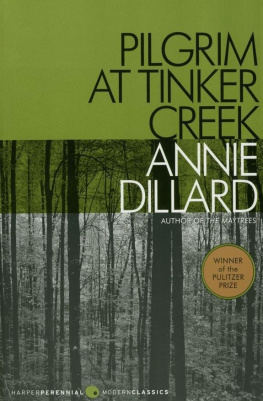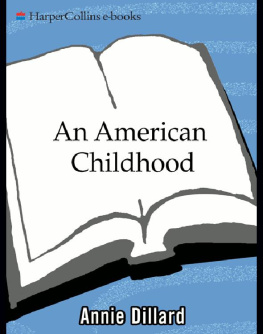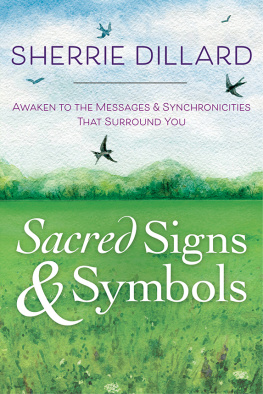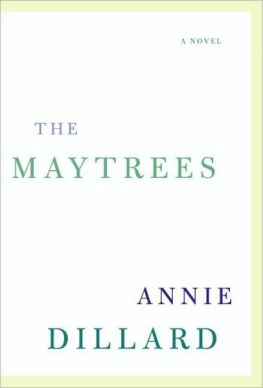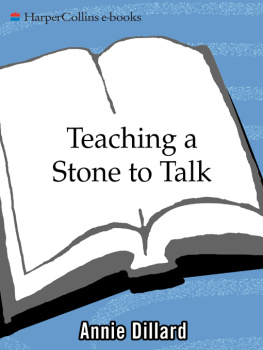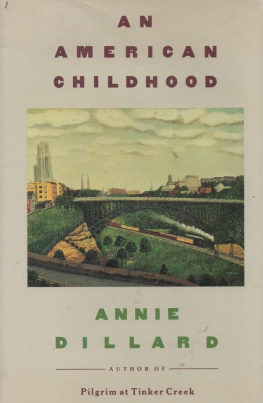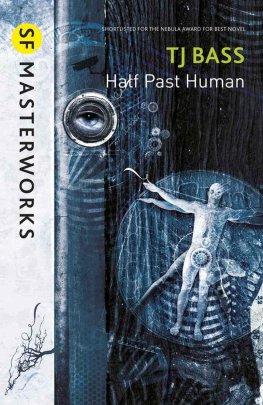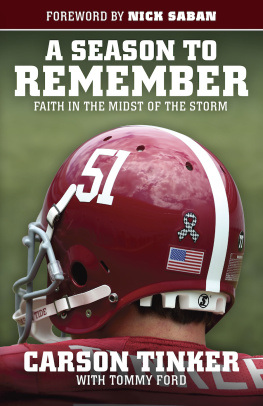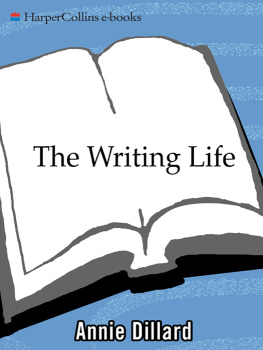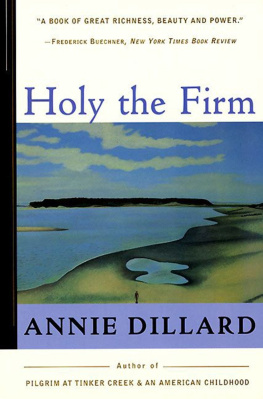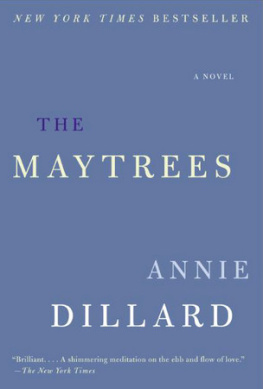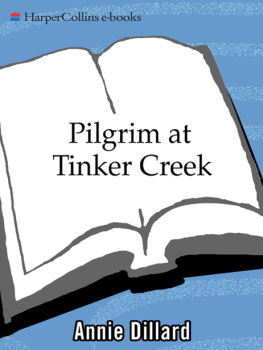Annie Dillard has carved a unique niche for herself in the world of American letters. Over the course of her career, Dillard has written essays, poetry, memoirs, literary criticismeven a western novel. In whatever genre she works, Dillard distinguishes herself with her carefully wrought language, keen observations, and original metaphysical insights. Her first significant publication, Pilgrim at Tinker Creek , drew numerous comparisons to Thoreaus Walden ; in the years since Pilgrim appeared, Dillards name has come to stand for excellence in writing.
Tickets for a Prayer Wheel was Dillards first publication. This slim volume of poetrywhich expressed the authors yearning to sense a hidden Godwas praised by reviewers. Within months of Tickets s appearance, however, the book was completely over-shadowed by the release of Pilgrim at Tinker Creek . Dillard lived quietly on Tinker Creek in Virginias Roanoke Valley, observing the natural world, taking notes, and reading voluminously in a wide variety of disciplines, including theology, philosophy, natural science, and physics. Following the progression of seasons, Pilgrim probes the cosmic significance of the beauty and violence coexisting in the natural world.
The book met with immediate popular and critical success. One of the most pleasing traits of the book is the graceful harmony between scrutiny of real phenomena and the reflections to which that gives rise, noted a Commentary reviewer. Anecdotes of animal behavior become so effortlessly enlarged into symbols by the deepened insight of meditation. Like a true transcendentalist, Miss Dillard understands her task to be that of full alertness. Other critics found fault with Dillards work, however, calling it self-absorbed or overwritten. Charles Deemer of the New Leader , for example, claimed that if Annie Dillard had not spelled out what she was up to in this book, I dont think I would have guessed. Her observations are typically described in overstatement reaching toward hysteria. A more charitable assessment came from Muriel Haynes of Ms . While finding Dillard to be susceptible to fits of rapture, Haynes asserted that the authors imaginative flights have the special beauty of surprise.
The authors next book delved into the metaphysical aspects of pain. Holy the Firm was inspired by the plight of one of Dillards neighbors, a seven-year-old child badly burned in a plane crash. As Dillard reflects on the maimed child and on a moth consumed by flame, she struggles with the problem of reconciling faith in a loving god with the reality of a violent world. Only seventy-six pages long, the book overflows with great richness, beauty and power, according to Frederick Buechner in the New York Times Book Review. Atlantic reviewer C. Michael Curtis concurred, adding that Dillard writes about the ferocity and beauty of natural order withgrace.
Elegant writing also distinguishes Living by Fiction , Dillards fourth book, in which the author analyzes the differences between modernist and traditional fiction. Everyone who timidly, bombastically, reverently, scholasticallyeven fraudulentlyessays to live the life of the mind should read this book, advised Carolyn See in the Los Angeles Times . See went on to describe Living by Fiction as somewhere between scholarship, metaphysics, an acid trip and a wonderful conversation with a most smart person. Whether the field of investigation is nature or fiction, Annie Dillard digs for ultimate meanings as instinctively and as determinedly as hogs for truffles, remarked Washington Post Book World contributor John Breslin. The resulting upheaval can be disconcertingstill, uncovered morsels are rich and tasty.
Dillard returned to reflections on nature and religion in a book of essays entitled Teaching a Stone to Talk: Expeditions and Encounters . In minutely detailed descriptions of a solar eclipse, visits to South America and the Galapagos Islands, and other, more commonplace events and locations, Dillard continues the pilgrimage begun at Tinker Creek with an acuity of eye and ear that is matched by an ability to communicate a sense of wonder, stated Beaufort Cranford in the Detroit News. Washington Post Book World contributor Douglas Bauer was similarly pleased with the collection, judging the essays to be almost uniformly splendid. In his estimation, Dillards art as an essayist is to move with the scrutinous eye through events and receptions that are random on their surfaces and to find, with grace and always-redeeming wit, the connections.
Dillard later chronicled her experiences as a member of a Chinese-American cultural exchange in a short, straightforward volume entitled Encounters with Chinese Writers ; she then looked deeply into her past to produce another best-seller, An American Childhood . On one level, An American Childhood details Dillards upbringing in an idiosyncratic, wealthy family; in another sense, the memoir tells the story of a young persons awakening to the world. In the words of Washington Post writer Charles Trueheart, Dillards memories of childhood are like her observations of nature: they feed her acrobatic thinking, and drive the free verse of her prose. Critics also applauded Dillards keen insight into the unique perceptions of youth, as well as her exuberant spirit. Loving and lyrical, nostalgic without being wistful, this is a book about the capacity for joy, said Los Angeles Times Book Review contributor Cyra McFadden, while Noel Perrin of the New York Times Book Review observed that Ms. Dillard has written an autobiography in semimystical prose about the growth of her own mind, and its an exceptionally interesting account.
The activity that had occupied most of Dillards adulthood was the subject of her next book, The Writing Life . With regard to content, The Writing Life is not a manual on craft nor a guide to getting published; rather, it is a study of a writer at work and the processes involved in that work. Among critics, the book drew mixed reaction. Annie Dillard is one of my favorite contemporary authors, Sara Maitland acknowledged in the New York Times Book Review . Dillard is a wonderful writer and The Writing Life is full of joys. These are clearest to me when she comes at her subject tangentially, talking not of herself at her desk but of other parallel casesthe last chapter, a story about a stunt pilot who was an artist of air, is, quite simply, breathtaking. There are so many bits like this. Unfortunately, the bits do not add up to a book. Washington Post Book World contributor Wendy Law-Yone voiced similar sentiments, finding the book intriguing but not entirely satisfying and a sketch rather than a finished portrait. Nevertheless, she wondered, Can anyone who has ever read Annie Dillard resist hearing what she has to say about writing? Her authority has been clear since Pilgrim at Tinker Creek a mystics wonder at the physical world expressed in beautiful, near-biblical prose.
Dillard ventured into new territory with her 1992 publication, The Living , a sprawling historical novel set in the Pacific Northwest. Reviewers hailed the authors first novel as masterful. Her triumph is that this panoramic evocation of a very specific landscape and people might as well have been settled upon any other time and placefor this is, above all, a novel about the reiterant, precarious, wondrous, solitary, terrifying, utterly common condition of human life, wrote Molly Gloss in the Washington Post Book World . Dillards celebrated skill with words was also much in evidence here, according to Gloss, who noted that Dillard uses language gracefully, releasing at times a vivid, startling imagery. Carol Anshaw concurred in the Los Angeles Times Book Review : The many readers who have been drawn in the past to Dillards work for its elegant and muscular language wont be disappointed in these pages.
Following the 1994 publication of The Annie Dillard Reader , a collection of poems, stories, and essays that prompted a Publishers Weekly reviewer to term Dillard a writer of acute and singular observation, Dillard produced two works that were published in 1995. Modern American Memoirs , which Dillard edited with Cort Conley, is a collection of thirty-five pieces excerpted from various writers memoirs. Authors whose work appears here include Ralph Ellison, Margaret Mead, Reynolds Price, Kate Simon, and Russell Baker. Many of these memoirs are striking and memorable despite their brevity, commented Madeline Marget in a Commonweal review of the collection.

